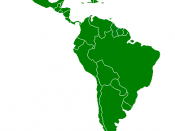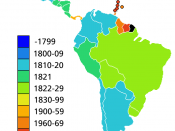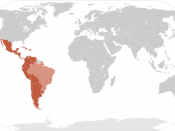Blooming Population
The nations of Latin America faced many challenges during the postwar period. Rapid industrialization brought new wealth to the region, but the population was sharply divided into groups of very rich and very poor. The rapid growth of the population of Latin America has resulted from a combination of tradition and progress. Traditionally, families had many children however many died in infancy and as a result, the population grew slowly. The doubled average number of births in Latin America compared to United States, improved health care and sharply lowered the infant mortality. However, the rate of infant death is lower than in the past. Thus, more babies live to adulthood, and Latin American's population is increasing.
The majority of Latin America's population consists of poor people: peasants, landless farm workers, and factory workers. As the population of rural areas expanded, the campesinos headed to cities in search of work in factories or stores and of better living conditions.
Rapid population growth meant increasing demands for goods and services and increasing competition for jobs. It also requires clean drinking water, housing, schools, health care and transportation. Latin America suffered from any form of poverty including unemployment, starvation, instability of the economy and politics, high prices and death rate. Because of Latin America's pressing financial needs, they were forced to borrow money and ask for support from other countries like United States. They placed new emphasis on manufacturing and foreign trade. It was hoped that new factories and markets would provide employment for large number of people. However, prices for coffee, sugar, and other raw materials plunged. The price declines foretold the global economic depression. Latin America suffered high unemployment and low prices for its products in the decade of the Great Depression. Today the region faces...


